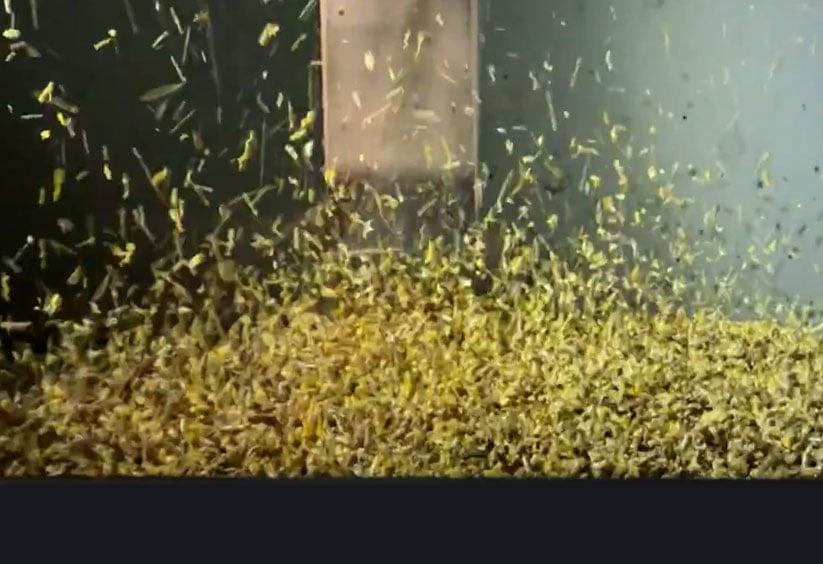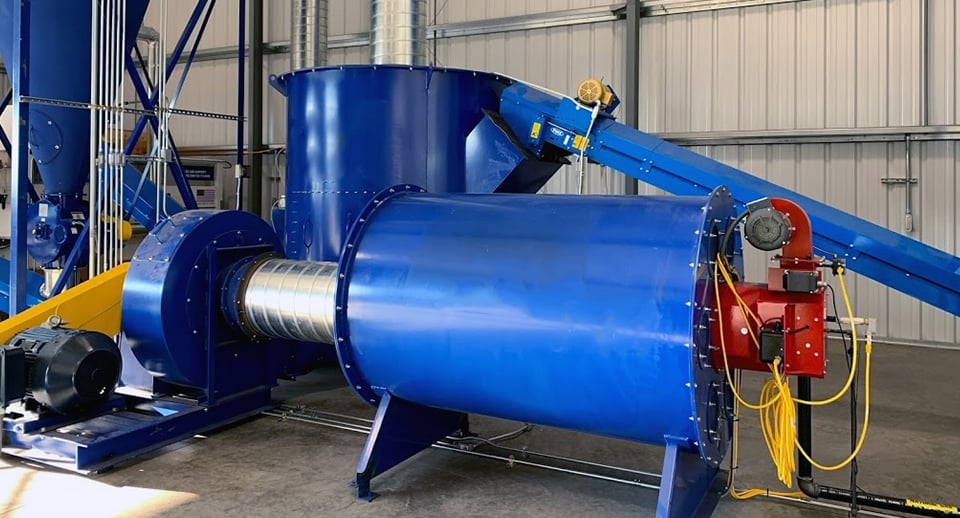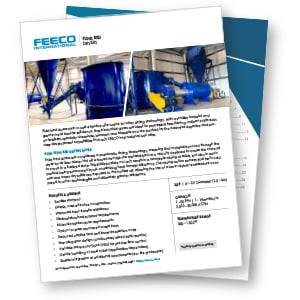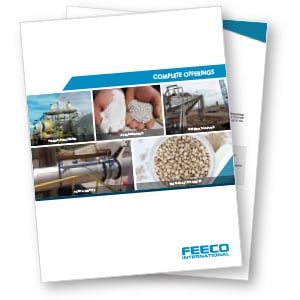FLUID BED DRYERS
With their smaller footprint and greater heat transfer efficiency, fluid bed dryers offer an optimal industrial drying system for operations with less available floor space. As a leader in bulk solids drying equipment, FEECO offers efficient drying methods designed to meet your production goals.
How Does a Fluid Bed Dryer Work
As a pneumatic drying technology, fluid bed drying relies on forced hot air to achieve fluidization of materials ranging from powders to granules to reduce the moisture content according to material specifications and desired throughput. Each material has a unique minimum fluidization velocity, or airflow required to fluidize the heaviest particles and reach a fluidized state. As such, particle size and shape, as well as the weight of the particles influence the fluidizing process.
A hot air stream is forced through a perforated plate at the velocity required based on the specific particle characteristics. This perforated distributor plate ensures uniform air distribution across the bed of material. Air velocity also determines the “regime,” or material flow pattern. Careful temperature control is essential to avoid overheating and degradation of heat-sensitive materials.
In contrast to a static system, the use of fluidization greatly increases the available material surface area exposed to direct contact with the air. Further, as material behaves like a fluid, it experiences complete mixing, resulting in uniform drying (for this reason a fluid bed dryer should not be considered a plug flow system).
While many equate these systems with vibratory fluid bed technology, this type of fluidized bed is distinctly different from a vibrating fluid bed dryer, which employs vibration to assist in moving material through the unit.
The exhaust air system is located above the discharge and uses a filtration system to capture and filter out small particulates. Buildup is prevented along the sides of the unit through turbulent mixing of the solids.
Air temperature and air flow are constantly regulated to yield a superior drying technology, whether employed as part of a granulation system, or as a pretreatment for raw materials.
Retention time is largely determined according to the size distribution of particles.
FEATURES
- Size: 4’ – 20’ Diameter (1.2 – 6m)
- Capacity: 1 – 50 TPH | 1 – 15mmBtu/hr | 3,000 – 50,000 ACFM
- Temperature Range: 300 – 1,500°F
- Smaller footprint
- Simple, cost-effective construction
- Improved heat transfer efficiency
- Minimal structural support requirements
- Minimal maintenance requirements
- Option to reuse recovered waste heat
- Reduced capital cost and lower installation costs
- Non-plug-flow design (continuously stirred tank reactor)
- Variable Frequency Drive (VFD) for precise flow control
- Gentle handling and minimal degradation of most particulates, ideal for fragile materials (application dependent)
- Simple integration of additional components
Optional Components
- Fire Protection
- Tapered Expansion Chamber
Accommodates Various Fuel Types
- Natural Gas
- Propane or Fuel Oil
Material Options
- Carbon Steel
- Stainless Steel
Please note that all FEECO Fluid Bed Dryers are built according to each project’s unique feed material and product requirements.
Fluid Bed Dryer Components
Mechanical Construction of a Fluid Bed Dryer
A – Air Outlet
B – Feed Inlet
C – Air Inlet
D – Air Distributor Plate

FEECO is capable of meeting the requirements necessary for CE marking equipment.

All FEECO equipment and process systems can be outfitted with the latest in automation controls from Rockwell Automation. The unique combination of proprietary Rockwell Automation controls and software, combined with our extensive experience in process design and enhancements with hundreds of materials provides an unparalleled experience for customers seeking innovative process solutions and equipment. Learn more >>
APPLICATIONS & MATERIALS
Fluid bed dryers are used across various industries with a wide range of materials. They are ideal for processing pellets and free-flowing, uniform solids such as:
- Fertilizers
- Specialty Chemicals
- Biomass
- Biosolids
Note: Materials that exhibit poor flowability or have an especially high moisture content may require some pretreatment prior to drying in a fluid bed unit.
Advantages & Disadvantages to Fluid Bed Drying
As with any industrial equipment, fluid bed dryers come with their own inherent advantages and disadvantages:
Fluid Bed Dryer Advantages
Key advantages of the fluid bed dryer include:
- Small footprint
- Thermally efficient
- Gentle handling
- Low cost
- Solids mixing
- Flexible application
- Simple fabrication
- Easily automated
Fluid Bed Dryer Disadvantages
- Requires feedstock uniformity
- Reduced energy savings at lower capacities
- Some dust and attrition
Fluid Bed Dryer Testing & Design (R&D)
The FEECO Innovation Center is a unique testing facility where we can test the material to be dried in our industrial dryers to determine the feasibility of your fluidized bed drying process, establish drying parameters, fine-tune product quality, and gather valuable data points necessary for scale-up.
The FEECO Innovation Center is well-equipped to suit a wide range of testing needs, from agglomeration to high temperature thermal processing, as well as continuous process loops integrating multiple testing methods.
We offer comprehensive testing services in four categories:
Feasibility/Proof of Concept: An initial, non-witnessed batch testing phase in which the possibility of creating a product is explored.
Proof of Product: A more in-depth batch testing phase in which more time is spent determining whether a product can be made to desired specifications.
Proof of Process: A continuous testing phase that aims to establish the equipment setup and parameters required for continuous production of your specific material.
Process/Product Optimization: An in-depth study to optimize your specific material’s characteristics and/or production parameters in an industrial setting.
RESOURCES
Fluid Bed Dryer ARTICLES

Fluid Bed Dryer Design: A Beginner’s Guide
Fluid bed dryers are one of the most popular types of industrial dryers, and for good reason: their high rate of …

Identifying and Resolving Common Fluid Bed Dryer Issues
Fluid bed dryers offer an effective approach to reducing moisture in bulk solids, leveraging fluidization to achieve uniform drying and high …



